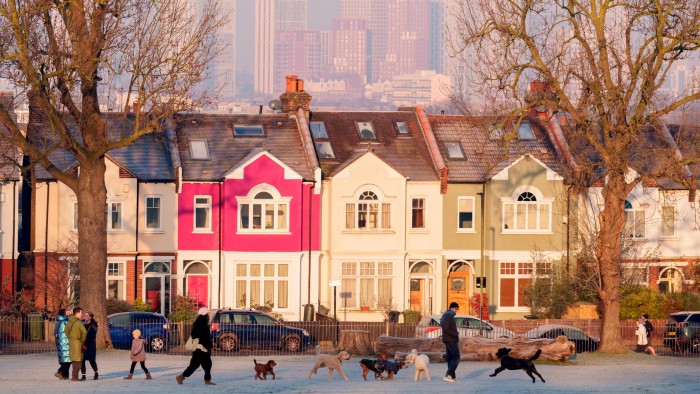Unlock the Editor’s Digest for free
Roula Khalaf, Editor of the FT, selects her favourite stories in this weekly newsletter.
European gas prices hit a two-year high on Monday as colder weather boosted demand, accelerating withdrawals from the region’s fast-depleting storage facilities.
Futures on the European benchmark TTF in Amsterdam rose as much as 4.5 per cent to €58.50 per megawatt hour, the highest level since February 2023. In the UK, the front-month contract rose a similar amount to as much as 142.20p/therm, also a two-year high.
A prolonged period of colder weather across north-west Europe is typically expected to increase demand for heating, leading to further withdrawals from European gas stocks, which are already at their lowest levels for this time of year since the energy crisis in 2022.
Europe has survived two consecutive winters since Russia’s full-scale invasion of Ukraine by replacing supplies of pipeline gas from Moscow with imports of liquefied natural gas from other parts of the world. Last year, LNG imports provided about 34 per cent of Europe’s gas, compared with 20 per cent in 2021.
European storage facilities were full heading into the winter, but countries have since had to draw on those stocks more heavily than in the previous two years due to colder weather and increased competition for LNG from Asia.

By mid-December, the volume of gas in the bloc’s storage sites had dropped about 19 per cent since the end of September, when the refilling season ends in gas markets, according to data from Gas Infrastructure Europe, an industry body. That compares with single-digit falls over the same period in the previous two years.
European gas storage facilities are now 49 per cent full, compared with 67 per cent at the same time last year, analysts said.
Supplies of Russian pipeline gas via Ukraine, which represented about 5 per cent of European imports, have also ceased since the start of the year, leaving Europe’s gas market “even more finely balanced”, said Natasha Fielding, head of European gas pricing at Argus.
“This means that changes in weather patterns can have a dramatic effect on prices as traders factor in the extra call on underground storage,” she said.
Forecasts now pointed to “simultaneous cold snaps across Europe and parts of north-east Asia from later this week”, she added, noting that Europe would have to compete “even harder” for LNG cargoes.
The LNG market is bracing for further changes after China announced a retaliatory 15 per cent levy on imports of American LNG in response to President Donald Trump’s 10 per cent tariff on all Chinese goods entering the US.
Fielding said the emerging trade war would prompt a “reorganisation” of trade flows, with Chinese buyers expected to sell their contracted US LNG to other markets, but that was unlikely to affect supply into Europe.
“Europe is comfortably attracting the large majority of US LNG cargoes right now, irrespective of the tariffs on China’s US LNG imports,” she said.
Additional reporting by Ray Douglas
https://www.ft.com/content/0d474498-4d9b-4c1b-8502-71248c720c04


